#Saint for for mathematicians
Photo

Happy Feast Day
Saint Hubert
656-727
Feast day: November 3
Patronage: hunters, mathematicians, opticians, metalworkers
Saint Hubert or Hubertus was passionately devoted to hunting. While chasing a stag on a Good Friday morning, he received a vision of a crucifix between the animal’s antlers. A voice warned him,“Hubert, unless you turn to the Lord, and lead a holy life, you shall quickly go down to hell.” It was a conversion experience for Hubert. After his wife died he became a priest and later a bishop working passionately for Our Lord.
{website}
65 notes
·
View notes
Text


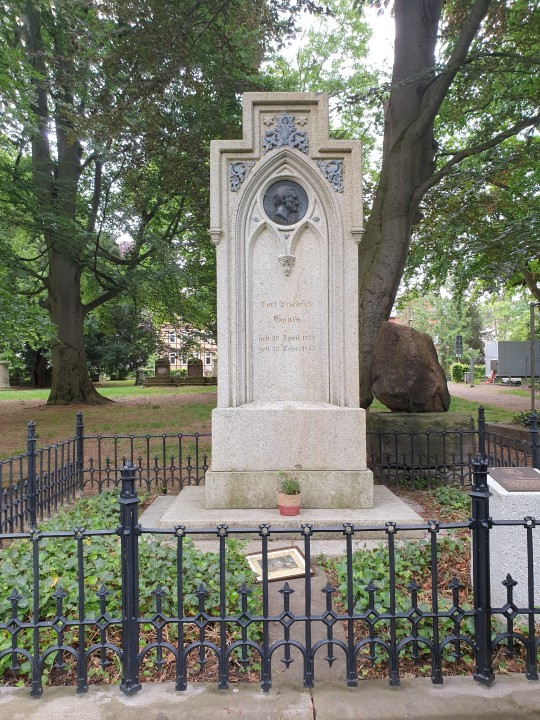

Göttingen
#quaint little city#postcard stand#bookshop#church#rose garden#©annavonihlenburg#my photos#grave of Carl Friedrich Gauß#a german mathematician#saint jacobi church#evangelic church#interesting graffity in the rose garden
3 notes
·
View notes
Quote
If there was ever a candidate to be patron saint of computers then it would be Alan Turing. Mathematician, war hero and tragic victim of homophobia.
Ben Aaronovitch, False Value
#quotes#ben aaronovitch#false value#alan turing#computers#patron saint#mathematician#war hero#victim#homophobia#text
4 notes
·
View notes
Text

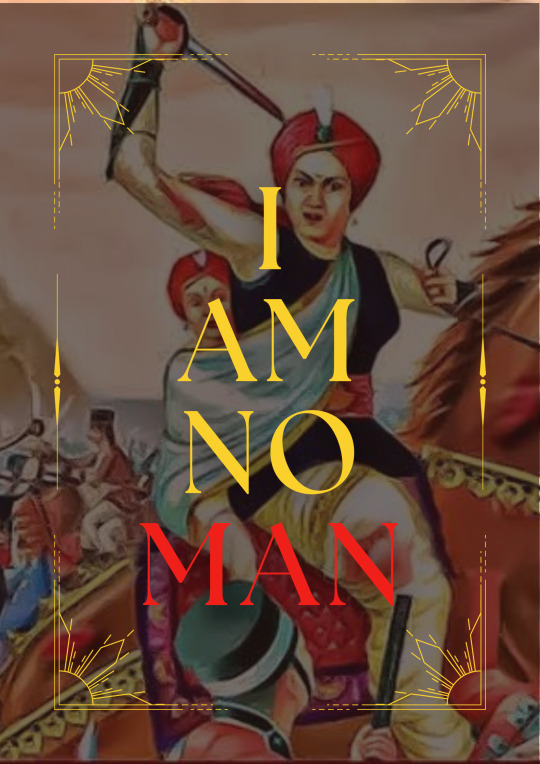
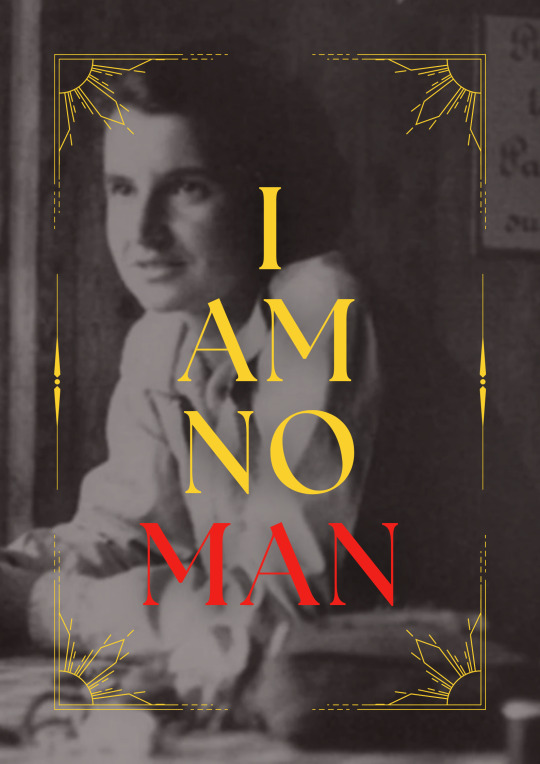





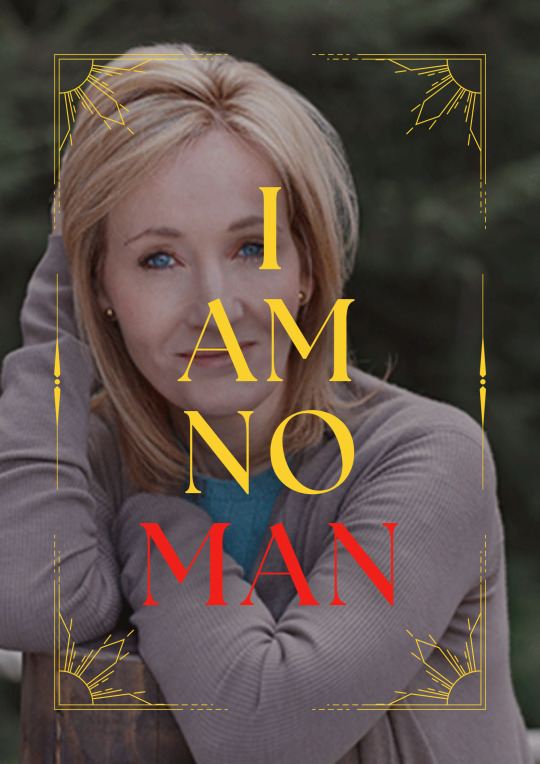
Throughout history, women have left an undeniable impact on society with their hard work, creativity, and dedication to progress. Unfortunately, their accomplishments have often gone unnoticed, been undervalued, or even stolen. Despite these challenges, brave women of today continue to push boundaries, break barriers, and pave the way for a more fair and equal world. It's our duty to keep going, so that future generations of women can inherit a kinder, more just, and supportive world. By following in the footsteps of the incredible women who came before us, we can create a world where every woman can flourish and succeed, and where their contributions are recognized and celebrated.
Joan of Arc is a patron saint of France, honored as a defender of the French nation for her role in the siege of Orléans and her insistence on the coronation of Charles VII of France during the Hundred Years' War. Claiming to be acting under divine guidance, she became a military leader who transcended gender roles and gained recognition as a savior of France. She was put on trial by Bishop Pierre Cauchon on accusations of heresy, which included blaspheming by wearing men's clothes, acting upon visions that were demonic, and refusing to submit her words and deeds to the judgment of the church. She was declared guilty and burned at the stake on 30 May 1431, aged about nineteen.
Rani Lakshmibai was the Maharani consort of the princely state of Jhansi from 1843 to 1853. She was one of the leading figures in the Indian Rebellion of 1857 became a symbol of resistance to the British rule in India for Indian nationalists. When the Maharaja died in 1853, the British East India Company under Governor-General Lord Dalhousie refused to recognize the claim of his adpoted heir and annexed Jhansi under the Doctrine of Lapse. She rode into battle with her infant son strapped to her back, and died in June 1858 after being mortally wounded during the British counterattack at Gwalior.
Rosalind Franklin was a British chemist and X-ray crystallographer whose work was instrumental in the discovery of the structure of DNA. Her contributions were largely overlooked by her male colleagues, James Watson and Francis Crick, who used her data without her permission or acknowledgement. This theft of her intellectual property and erasure of her contributions is a prime example of the systemic sexism that has historically plagued the scientific community.
Hedy Lamarr was an Austrian-American actress and inventor who co-invented a frequency-hopping spread spectrum technology during World War II that was used to guide torpedoes. However, her contributions were largely ignored and dismissed by male engineers and the military at the time. It was only later in life that she received recognition for her scientific achievements.
Emma Weyant is an American competitive swimmer. She was the US national champion at the individual medley. She qualified for the 2020 Olympic Games in the 400m individual medley and won the silver medal in this event. Weyant finished second in the 500-yard freestyle at the 2022 NCAA Division I Women's Swimming and Diving Championships. She was beaten by William (Lia) Thomas, a fetishist, who when competing as a member of the Penn men's team, which was 2018-19, ranked 554th in the 200 freestyle, 65th in the 500 freestyle and 32nd in the 1650 freestyle. Weyant is the fastest swimmer in the 500-yard freestyle and had her position stolen by a man.
Maryna Viazovska is a Ukrainian mathematician who made a breakthrough in sphere packing, solving the centuries-old mathematical problem known as the densest packing of spheres in dimensions 8 and 24. She was awarded the Fields Medal in July 2022, making her the second woman (after Maryam Mirzakhani), the second person born in the Ukrainian SSR and the first with a degree from a Ukrainian university to ever receive it.
Hannie Schaft was a Dutch resistance fighter during World War II who played a crucial role in the resistance movement against Nazi occupation. Schaft was a former university student who dropped out because she refused to sign a pledge of loyalty to Germany. Nazis arrested and killed her in 1945, just three weeks before the war ended in Europe. According to lore, Schaft’s last words were, “I’m a better shot,” after initially only being wounded by her executioner.
Shakuntala Devi was an Indian mathematician and mental calculator who was known as the "Human Computer" for her exceptional ability to perform complex mathematical calculations in her head. Her extraordinary abilities earned her a place in the 1982 Guinness Book of Records. Her lesser known achievement is that in 1977 she wrote what is considered to be the first book in India on homosexuality titled “The World of Homosexuals.”
J. K. Rowling is a British author and philanthropist. She wrote Harry Potter, a seven-volume children's fantasy series published from 1997 to 2007. Known for her philanthropy, she was doxxed and harassed after coming out with support for women's and gay rights in 2020. Rowling secretly donated hundreds of thousands of pounds to save 100 female lawyers and their families facing murder in Afghanistan. In 2022, she funded a women's only rape shelter in Edinburgh.
#this post was inspired by me being absolutely sick of trans activists claiming that joan of arc/rani lakshmibai/insert literally any other#strong woman#is actually a trans man#they were no man at all#women have been brave and strong and amazing throughout history#and they still are#if only you'd get your head out of your ass to take a look#radical feminism#radblr#terf#trans#misogny#i am no man
683 notes
·
View notes
Photo

Leon Battista Alberti
Leon Battista Alberti (1404-1472 CE) was an Italian scholar, architect, mathematician, and advocate of Renaissance humanism. Alberti famously wrote the treatise On Architecture where he outlines the key elements of classical architecture and how these might be reused in contemporary buildings. Even more influential were his writings on painting and sculpture, which transformed the theoretical practices of Renaissance artists. Alberti put his ideas into practice and designed many churches in various Italian cities, perhaps the most influential being the San Andrea of Mantua (1470 CE), the first monumental classicizing building of the Renaissance.
Early Life
Alberti was born in Genoa on 14 February 1404 CE. He was an illegitimate member of a wealthy merchant-banker family, which had been exiled from Florence in 1387 CE. The family moved from Genoa to Venice and, thanks to his father Lorenzo, Alberti enjoyed a school and university education in Padua followed by a stint at the University of Bologna. Alberti's education included mathematics, Greek, Latin, classical literature, and, finally, a doctorate in canon law from Bologna in 1428 CE.
Alberti moved to Rome where he worked as a papal secretary from 1432 CE. One task at the Papal Chancery was to write a new version of the lives of the saints and martyrs. The young scholar took holy orders and this brought with it several benefices that improved his income significantly. However, his position in the church seems not to have had any influence at all on his humanist writings or his treatises on art and architecture. When the Medici family took power in the early 1430s CE, Alberti was finally able to return to his ancestral home. Florence was then the capital of Renaissance art and architecture where men like Donatello (c. 1386-1466 CE) and Filippo Brunelleschi (1377-1446 CE) were reviving the ideals of classical antiquity. Alberti would later write that his contacts in Florence inspired him to participate in this revival himself.
Alberti continued in his role as a papal secretary but also acted as a sort of artistic consultant to rulers in various Italian cities such as Florence, Ferrara, Mantua, Urbino, and Rimini. Moving around Italy gave Alberti a great insight into the many Greco-Roman remains still visible and perhaps inspired him to make plans for a survey of ancient Roman buildings in Rome. Alberti's study of ancient architecture resulted in him noting that there were actually five and not four classical orders as previously thought. This fifth one, subsequently called the Composite order, was a mix of elements from the Ionic and Corinthian orders. Also interested in architectural theory, Alberti was a keen student of On Architecture by the Roman architect Vitruvius (c. 90 - c. 20 BCE). Accordingly, when Alberti moved into this new field in more practical terms, he wanted his buildings to both imitate the austere grandeur of ancient Greece and Rome's finest buildings and reproduce their classical ratios of height and length. Another important consideration was that buildings should display a harmonious balance between function and decoration.
Continue reading...
35 notes
·
View notes
Text
Concerning Carnot's protective attitude towards nobles, which led Saint-Just to call him an aristocrat, Monar quotes "Le Grand Carnot" by Reinhard, an unavailable rare and apparently heavily sourced biography of the mathematician. I was already cursing editors for not reprinting old books when I discovered that a library 3km away from my house has that book.
This is a sign guys.
21 notes
·
View notes
Text
Marx and Mathematics
“Engels knew nothing, Marx at least knew a little bit”
The historian of science Annette Vogt explains how and why the founders of scientific socialism engaged with mathematics
Interview by Nelli Tügel:
originally published in German in ak 688, 13 December 2022
In order to better understand capitalism, Karl Marx taught himself parts of algebra and calculus. Nevertheless, he was not a mathematical genius. The historian of science and mathematician Annette Vogt explains why the editorial history of Marx’s mathematical manuscripts resembles a detective novel, and how he used math to deal with personal crises.
Professor Vogt, is it true that Karl Marx made numerous mathematical errors in Capital?
Annette Vogt: That’s true, there are all kinds of calculation errors. But that’s human. And Marx was also just a human being.
Only a few people know that Marx left behind mathematical manuscripts numbering almost 1000 pages. Why did he engage with mathematics at all?
One reason was that he wanted to predict economic crises; in the case of the first one, he was rather euphoric that capitalism was now collapsing. He then asked himself: are they regular, for example every five or ten years or – as is actually the case – irregular. Marx was friends with the chemist Carl Schorlemmer, who told him that it might be possible with the aid of calculus – more specifically, with differential calculus – to calculate when the next crisis would come. When Marx attended Gymnasium in Germany, differential and integral calculus were not yet part of the curriculum, that was first the case after 1900. So he had no knowledge of it and did what a scientist does…
Pick up a book first?
Exactly. He went to the library and sought out books that he could learn it from. However, as the Dutch-American historian of mathematics Dirk Struik, who was one of the first to write about the manuscripts, accurately put it: for studying capitalism, Marx was in the right country, England; for studying mathematics, he was in the wrong one. He wasn’t familiar with the newest mathematical literature on calculus, because it was all from continental Europe and was not yet available in England. So he studied the textbooks that were available to him. The mathematical manuscripts consisted largely of excerpts that he created on the basis of his readings, and his notes on them. That’s how Marx taught himself differential calculus.
Were there further reasons for his engagement with mathematics?
Yes. A further reason was – and I understand it quite well, as a mathematician – that it helped him through personal crises. We know this from letters to Engels: when one of his children died young, he did arithmetic in order to distract himself. That might sound incredible to people who are afraid of mathematics, but of course this way of keeping busy can help somebody not to grieve all the time.
What other areas of mathematics did Marx devote himself to?
He also did a little bit of algebra. Algebra consists of equations, from the most simple 2+2=4 to abstract equations up to those – think of the Pythagorean theorem – that can be illustrated geometrically.
That simply had to do with the fact that there are equations in economics.
So his interest was largely pragmatic?
There are two interpretations regarding Marx and mathematics. One – the hagiographic one, making him into a pillar saint – is that Marx was such a universal genius, that he was also a mathematical genius. That’s simply wrong. The other one is: he was a scientist, and as such, he appropriated knowledge that he needed via self-study. He also wrote geological excerpt notebooks – but luckily, it never occurs to a geologist to claim that Marx was a great geologist. (laughs)
With regard to the editorial history of the excerpt notebooks, the hagiographical element plays a role, however: those who wanted to publish the mathematical manuscripts were disappointed by their content.
Because they didn’t find in them the genius they were hoping for?
Exactly. However, his notes are nonetheless significant, simply because they show us the areas he was concerned with, and because they help us to understand and reconstruct his thought. However, Marx can be a role model for everyone who is afraid of math: there’s no reason for that, anyone can learn it.
In your entry on the manuscripts in the Historisch-kritisches Wörterbuch des Marxismus, you write: “his notes on the history of ‘infintesimal calculus’, that is, of differential and integral calculus, have a charm of their own.” What did he write?
He studied textbooks – for example those of the French mathematicians Lagrange or Cauchy – and attempted to understand what the crux of differential calculus is. One can actually see this quite nicely when looking at its historical development and asking why which thing was done at what time. For example that it started with physics, because people wanted to calculate the speed of something. Well, that’s exactly what Marx did, he chose a historical approach, and asked: why does Lagrange take this step, why does he examine that function, why didn’t somebody else do that – these notes are simply interesting for historians of mathematics. He did that completely correctly, he understood the core of the matter.
What do you know about the period of time in which he concerned himself with that?
There were three phases in which notes were made, each in the British Museum Library. Using the borrowing slips, it was exactly reconstructed when he read which books there, that’s how we know he wasn’t familiar with the most modern literature. He knew French, that helped him to read Lagrange and Cauchy in the original.
To what extend did his concern with mathematics have an influence on Engels’ work?
While Engels was writing Dialectics of Nature, Marx – we know this from letters – had told him a bit about the history of mathematics. I suspect that Engels for that reason also therefore thought that Marx was a talented mathematician, since Engels didn’t know anything about math and Marx at least knew a little bit. Thanks are due to Engels for the fact that the mathematical manuscripts were preserved after Marx’s death. He considered them important. Marx never intended to publish them; they were working material.
Even today, the manuscripts are – despite Engels’ intention – only partially published. Why?
After the victory of the October Revolution, the Marx-Engels-Institut was founded in Moscow, later the Marx-Engels-Lenin-Institut, and charged with the task of publishing a Marx-Engels-Gesamtausgabe, the MEGA I. The father of this edition was David Borisovich Ryazanov, who later became, along with many other members of the Institut, a victim of Stalin’s persecution. The project of the MEGA I was interrupted. After 1945, the MEGA II began publication, later the project of MEGA III was begun with the participation of the Berlin-Brandenburg Academy of Sciences and Humanities, the International Institute of Social History Amsterdam, and collaborators from Moscow. It is not yet completed, and within the framework of MEGA III, the mathematical manuscripts are also supposed to be published completely.
However, there is a volume with part of the manuscripts: in 1968 a special edition was published, which until today is the basis for all engagement with the manuscripts, including the English and French translations and the – strongly abridged – German edition.
Who was responsible for this edition?
It goes back to work by the mathematician and specialist for logic, Sofia Yanovskaya, and Konstantin Rybnikov, who was a professor of history of mathematics at Lomosonov University in Moscow. However, they “forgot to mention” – in scare quotes – the work of Ernst Kolman, a Czech-Soviet Comintern functionary who lectured and published articles on the mathematical manuscripts at international conferences from 1932 on. In 1968, he distanced himself from Soviet leadership due to the Prague Spring, that’s why he isn’t named in Yanovskaya and Rybnikov’s edition. When I first dealt with this in the 1980s and noticed it, I thought: that’s really unfair.
And it is!
Yes. But here’s the exciting part. I then found out: Kolman himself had deliberately covered up who had been the person commissioned by Riazanov in the 1920s to prepare the mathematical manuscripts for publication in the MEGA I: the mathematician and political author Emil Julius Gumbel. Gumbel was a co-founder of the modern statistics of extreme values, which are used to calculate extreme events, such as the Corona pandemic. Gumble had basically finished editing the manuscripts, at the end of the 1920s he read the galley proofs, but the publication never happened: work on the MEGA fell victim to the repression under Stalin. Gumbel was later driven from Germany by the Nazis; he worked in Paris and Lyon, and later in American exile.
You see, in a certain way it’s tragic: over the decades, almost a hundred years, a few people have already worked on the editing of these mathematical manuscripts, and many sad stories are involved. If I were a writer of crime novels, I’d write a book about it and call it “The Curse of the Manuscripts.”
Annette Vogt has a degree in mathematics and a doctorate in the history of mathematics. From 1994 to 2018, she was a research scholar at the Max-Planck-Institut für Wissenschaftsgeschichte. Since 1997 she has taught at the Humboldt University in Berlin, and since 2014 she has been an honorary professor of the economics faculty of the HU. Among other things, she is co-author of a traveling exhibition on the life and work of Emil J. Gumbels.
Nelli Tügel is an editor at ak.
127 notes
·
View notes
Text
Saint Barbara is a popular Christian Greek saint, depicted with chains and a tower, and acts as the patron of armourers, artillerymen, military engineers, miners, and others who work with explosives, as well as mathematicians. Her story involves her keeping strong in her beliefs and her faith, even in face of torture. She was martyred by her father, the main instigator of her torture, who was struck by lightning after killing her.
While this isn't a complete representation of the story of Saint Barbara - and I encourage you to look into it yourselves - it's easy to draw parallels between her story and Barbara Gordon's. Her position of patronage over engineers and those working with explosives and associations with towers can be seen in most imagery of her.
Faith is another interesting concept. While most people see faith as a belief in a person, religious faith has more connotations of faith in a concept, in a higher belief which exceeds the bounds of mankind, and people show their faith in different ways. It doesn't mean different expressions of faith are wrong, even though people may believe that.
And faith strong enough to conquer adversity is the strongest of all. Through torture, through repeated pain and suffering, and through a loss of everything she knew, Barbara was able to overcome and I just think that's neat.
12 notes
·
View notes
Text
Grantaire...
Curious how Victor Hugo manages to fuse personality into the characters. Grantaire may be in coadjuvant but he's so... quick-witted, intelligent and well-spoken, with a very social demeanor, but with a bottle in hand and alcohol in his body, he becomes easily depressing, truly dejected, melancholy and downright unhappy. And I sympathize???
They are characters so different from each other, it's crazy how the same author who creates the merciful, religious and God-fearing Bishop Charles-François-Bienvenu Myriel, creates Grantaire too and so many other characters with such different and profound personalities.
Grantaire has such a skeptical view of life (see everything from a negative dogmatism point of view, that is, his justice about things is always conditioned by a feeling of disbelief, do not confuse with questioning, in the skeptic there is a surly, bitter, unproductive denial – people like that are usually pessimistic). This is described in the book as: "Grantaire was a man who took good care not to believe in anything." He's not genuinely a person contrary to those around him, his cynicism isn't an act of provocation towards his peers only, but really how he views life and the world.
In the book: “He was ironical and cordial. His indifference loved. His mind could get along without belief, but his heart could not get along without friendship”.
And too, he says :
“Gentlemen, my father always hated me because I could never be a mathematician. And here, too, I don't understand your love of freedom and the republic! I'm just Grantaire, the good guy! As I never had money, I never got used it, and therefore I never lacked it; however, if I were rich, there would be no poor people, you would see! Oh, if good hearts were the ones with good fortunes, it would be different and things would go along a different path! Why, imagine Jesus Christ, with the Rothschild fortune! What good would he do!(…)”
“In fact, this circumstance has just confirmed my conjectures about the situation of God's fortune, and judging by so many poverties that already exist up there and down here, in view of so much misery in everything, I suspect that God does not it's very rich there. There is appearance, it is true, but one knows the poverty that is hidden. Oh, by all the saints on Olympus and by all the gods in Heaven, I wasn't born to be a Parisian, I was born for the easy life, but that's not how anyone's life is. In view of this I will drink more. The earth is absurd. Oh, old world, old world! You are the vile vessel of demoralization, deprivation, prostitution, ambition, ineptitude!” And Grantaire, after this burst of eloquence, had a burst of coughing, which he deserved.
“My friends, I hate the human species! (...) I think it is time to clarify the human being. But here comes sadness to take possession of me again!"
"Oh my God! Morality is something that does not exist in this world! Oh, what in this world goes birds of prey! Almost all are bad eagles! So many that I am afraid of them. So, don't believe in anything. The only reality is drinking. Whatever your opinion, it doesn't matter, it's all about drinking!". This was his axiom: "There is but one certainty, my full glass."
Grantaire, completely intoxicated, stunned the ears of those around him, in one of the corners, disagreeing in a thunderous voice and shouting: “I am thirsty. Mortals, here is my desire: I wanted to drink, because I want to forget life. Life is a hideous invention by I don't know who. Something that lasts nothing and is worth nothing; and we kill each other to live. Life is a frame about to come crashing down. Happiness, a panel painted only on one side. Ecclesiastes says that all is vanity. It is a pity that I am ignorant, otherwise I would quote you an immensity of things; but I don't know anything. I used to be gifted when I was in art class, but there are so many vices in virtue…” Bossuet tried to shut him up and Joly said “don't give Grantaire any more wine, he ends up this penniless and a little mad”, but R kept going at the top of his lungs “Who gave you such a right without my permission? And too much, I'm sad. What do you want you to say? Man is bad, man is deformed, miserable, infamous, melancholic... and I am angry, enraged, bored, I can only open my mouth, I feel dead, I feel stupid (...)”
"wine, mediocre source of dreams. Grantaire was an adventurous drinker of dreams. In the first glasses Grantaire, his prodigious joy appeared; then he reached this dismal (macabre) phase, a fearful intoxication, half-opened in front of him, instead of making him stop, it attracted him. He had left education aside and had left the cup, drinking from the bottle. The measure is the abyss. Having no opium at hand (used as a narcotic, taking the person into a stupor rather than anesthesia), nor hashish (cannabis extract used as a narcotic), and wanting to fill his brain with twilight, he had resorted to the dreadful mixture of brandy, beer and absinthe, which produces terrible lethargy (unconsciousness). It is from the three vapours, beer, brandy, absinthe, that the lead of his soul is composed. And his darkness is three: Nightmare, Night, Death, fluttering over his sleeping psyche".
“However, this sceptic had one fanaticism. This fanaticism was neither a dogma, nor an idea, nor an art, nor a science; it was a man: Enjolras. Grantaire admired, loved, and venerated Enjolras. To whom did this anarchical scoffer unite himself in this phalanx of absolute minds? To the most absolute. In what manner had Enjolras subjugated him? By his ideas? No. By his character. A phenomenon which is often observable. A sceptic who adheres to a believer is as simple as the law of complementary colors. That which we lack attracts us. No one loves the light like the blind man. Grantaire, in whom writhed doubt, loved to watch faith soar in Enjolras. He had need of Enjolras. That chaste, healthy, firm, upright, hard, candid nature charmed him, without his being clearly aware of it, and without the idea of explaining it to himself having occurred to him.”
One might almost say that affinities begin with the letters of the alphabet. In that sequence, O and P are inseparable. You might just as well say O and P as Orestes and Pylades.
"A true satellite of Enjolras, Grantaire lived within this circle of young men (les amis de l'ABC). He dwelt among them, only with them was he happy, he followed them everywhere. His pleasure was to watch these figures come and go in a wine-induced haze. They put up with him because of his good humour. In his belief, Enjolras looked down on this sceptic; and in his sobriety, on this drunkard. He spared him a little lordly pity. Grantaire was an unwanted Pylades. Always snubbed by Enjolras, spurned, rebuffed and back again for more, he said of Enjolras, ‘What marmoreal magnificence'."
"There are men who seem to be born to be the reverse, the obverse, the other side. They are Pollux, Patrocles, Nisus, Eudamidas, Ephestion, Pechmeja. They only exist on condition that they are backed up with another man; their name is a sequel, and is only written preceded by the conjunction and; and their existence is not their own; it is the other side of an existence which is not theirs. Grantaire was one of these men. He was the obverse of Enjolras".
#les amis de l'abc#les amis#les mis#grantaire#r#les miserables#victor hugo#book#depressed#enjolras x grantaire#enjoltaire#makes me want to know every detail of his life#and what made him so skeptical#headcanons?#fanfictions#those authors who give deep personality to mere supporting characters
37 notes
·
View notes
Text
In case anyone was wondering, these are the faceclaims I used for the (canon) Romance in the Neath series (lots of Phantom of the Opera)
Artist and Artist’s Model: Aaron Taylor-Johnson in Anna Karenina/Ana de Armas
Master Jewel Thief and Honey-Sipping Heiress: Alexander Dreymon in The Last Kingdom/Lise Slabber in Black Sails
Melancholic Curate and Enigmatic Sister: Aidan Turner in Desperate Romantics/Joanna Vanderham in The Go-Between
Acclaimed Beauty and Barbed Wit: Leslie Odom Jr/Ramola Garai in The Crimson Petal and The White
Affectionate Devil and Quiet Deviless: Clark Gable, one of the pictures is from Gone with the Wind/Clara Bow
Revolutionary Firebrand and Secular Missionary: Sean MacLaughlin in Phantom of the Opera on Broadway and in the US Tour/Carey Mulligan in Far From the Madding Crowd
Cultured Attaché and Cultured Attachée: James Norton in Little Women/Katherine Kelly in Mr. Selfridge
Academic Intriguer and Devout Intriguer: Louis Garrel in Little Women/Daisy Head in Shadow and Bone in one picture, Harlots in the other
Promethean Rogue and Incendiary Tastemaker: Derrick Davis in the Restaged US Tour of Phantom of the Opera/Phoebe Fox in Life in Squares
Blooming Wallflower and Flexible Intelligencer: Bryce Pinkham in A Gentleman’s Guide to Love and Murder on Broadway/David Oyewolo in the 2018 Les Misérables series
Joyful Charter Clerk and Joyful Illuminator: Jean Steinberg in Saint Joan/Mei Pang
Infamous Mathematician and Roguish Semiotician: Freida Pinto in Mr. Malcolm’s List/Domnhall Gleeson, one of the pictures is from Anna Karenina
Cheery Man and Last Constable: Joseph Mawle in Ripper Street-Jennifer Ehle in Possession in one picture, Pride and Prejudice in the other
September and the Clay Highwayman: Johnny Harrington/unknown model in a photography series by Jason Sinn
Paleontologist and F.F. Gebrandt: Bilal Baig/Helen Mirren
Sardonic Music-Hall Singer and Poor Edward: Denée Benton in The Gilded Age in one picture, and in Natasha, Pierre, and the Great Comet of 1812 on Broadway in the other/dummies used for the Masquerade scene in the stage production of Phantom of the Opera, the Copenhagen production
Silk-Clad Expert: Audrey Tautou in Coco Before Chanel
Once-Dashing Smuggler: Rami Malek in Night at the Museum
Captain Amelia Whitlock: Sonequa Martin-Green
New Dreamer: Cynthia Erivo
12 notes
·
View notes
Text
#OTD in Irish History | 6 November:
Feast of All the Saints of Ireland.
1649 – Death of Owen Roe O’Neill.
1812 – Charles Graves, bishop and mathematician, is born in Dublin.
1885 – Birth of Martin O’Meara, VC at Terryglass, Lorrha, Co Tipperary. He was an Australian recipient of the Victoria Cross, the highest award for gallantry in the face of the enemy that can be awarded to British and Commonwealth forces. He spent his early…

View On WordPress
#irelandinspires#irishhistory#OTD#1917#6 November#Battle of Messines#Feast of All the Saints of Ireland#Gaelic League#History#History of Ireland#Ireland#Irish Civil War#Irish History#Irish War of Independence#Today in Irish History
10 notes
·
View notes
Text

Saint Hubert
656-727
Feast day: November 3
Patronage: hunters, mathematicians, opticians, metalworkers
Saint Hubert or Hubertus was passionately devoted to hunting. While chasing a stag on a Good Friday morning, he received a vision of a crucifix between the animal’s antlers. A voice warned him,“Hubert, unless you turn to the Lord, and lead a holy life, you shall quickly go down to hell.” It was a conversion experience for Hubert. After his wife died he became a priest and later a bishop working passionately for Our Lord.
Prints, plaques & holy cards available for purchase here: (website)
#Portraitsofsaints#Feastday#Saintoftheday#StHubert#SaintHubert#Patronsaints#Patronsaint#Catholicsaint#catholicillustrator#Catholicism#saintart#catholicsaints
68 notes
·
View notes
Text

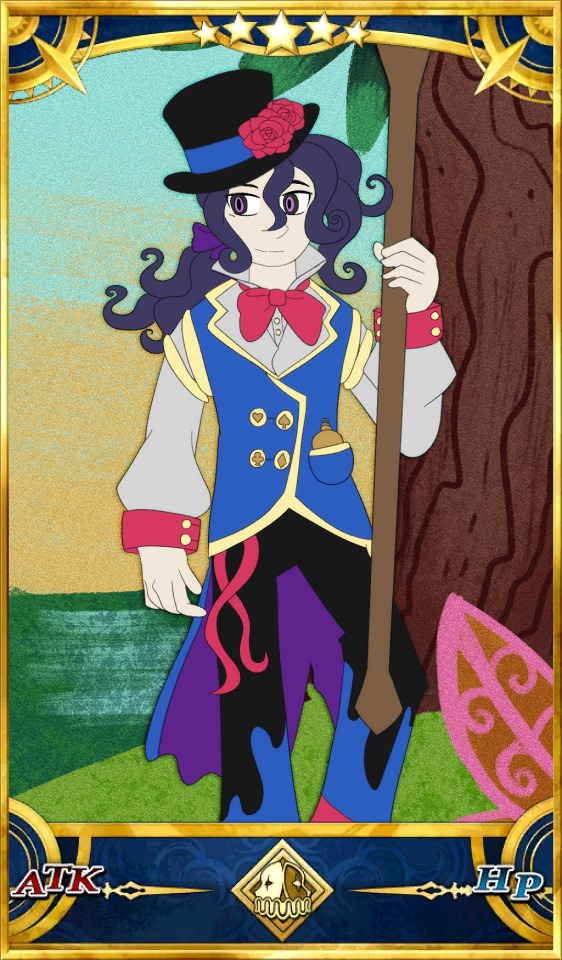

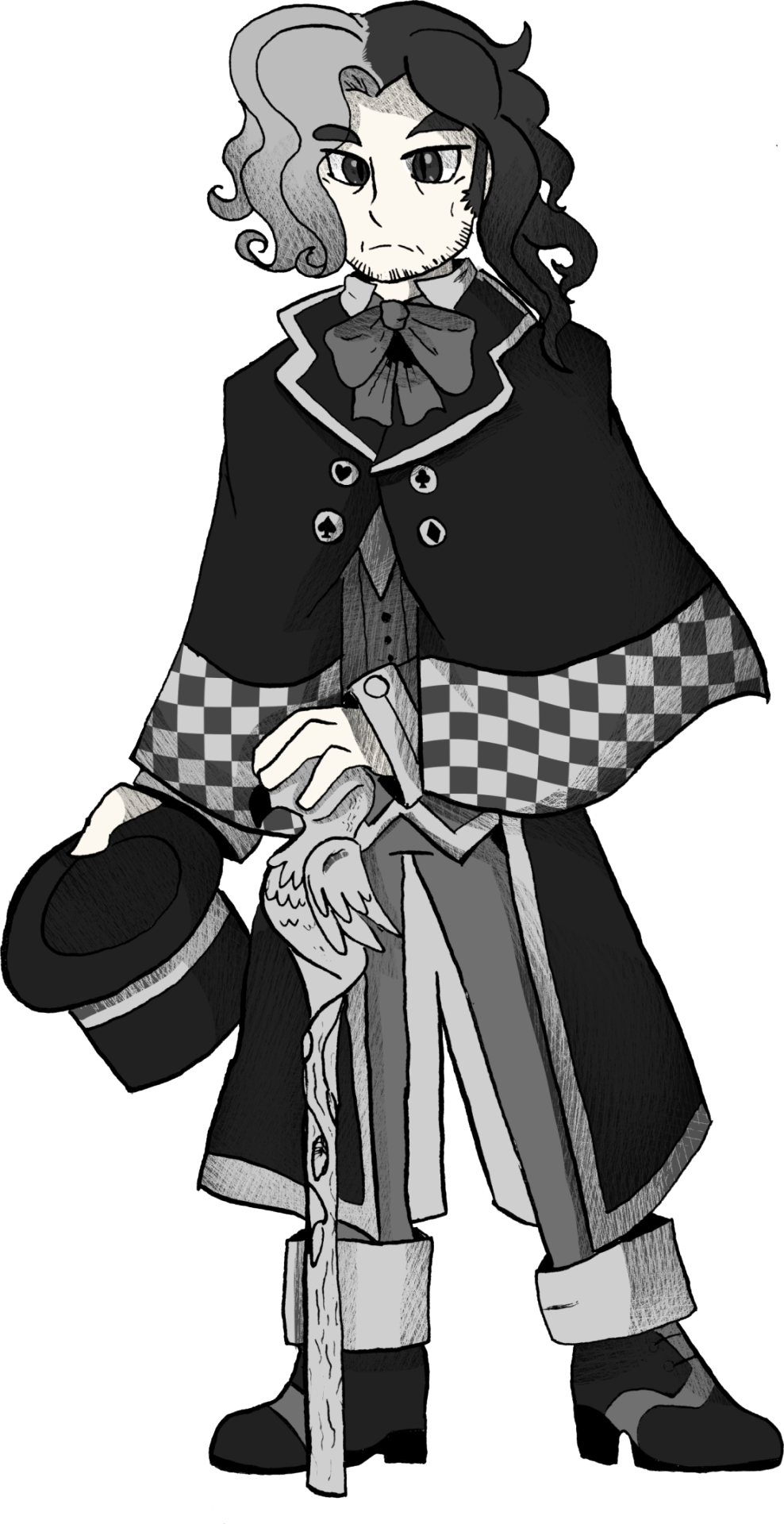


At long last, proper saint graphs for my fanservant, Lewis Carroll!
Part way through development I settled on him being an Alter-Ego class. More details (and design notes) under the cut
"In order to embrace madness, you must understand the rules that confine them."
One of the greatest mathematicians in Victorian-era England, creator behind the Word Ladder puzzle and the cipher language of Nyctography and the affiliated Nyctograph. Surely, these would be enough...
...But, around the world, these accomplishments pale to comparison to the name he is best known under, the man behind The Jabberwocky, The Hunting of the Snark, and most importantly, Alice's adventures in Wonderland and through the looking glass."
Still working on skills (Something like "Mathematics A+" would probably be his first skill) but the general gist is as a penname, the Stage 3 reflects Lewis Carroll (as a penname and the general vibe attributed to his works), whereas Stage 1 is more reflective of the man behind the pen name, Charles Lutwidge Dodgson. Stage 2 is sort of a mid point, before the penname was created but was thinking about it (hence the Victorian Era summer swear and the oar, as the Alice stories were originally told while rowing down a river). In Fate-verse, the pen name of Lewis Carroll was coined in order to publish nonsense literature more safely, and not ruin the innocence and imagination of any children should Charles end up falling from grace somehow.
Yet, we all know the name Lewis Carroll, but far less know of Charles Lutwidge Dodgson. An Alter-Ego with some memories of who he once was, but mostly recalls the poetry and stories the pen name was attributed to.
Design Notes
Stage 1: Meant to be 50-60 years old, and the greyscale is reflective of the original Alice book illustrations. His cane depicts a Dodo, as the character of The Dodo from the Alice books is said to be a self insert. Fun fact, his lineart was done by hand with a dip pen and the equally British Winsor and Newton ink. I thought about coloring him via doing washes of ink but was too scared to mess up my lines :X
Stage 2: 30-40 years old, starts getting some brighter colors but still has some grey. Based on color animated adaptations of the Alice books, notably the 1951 Walt Disney one, colors reflective of the titular character. Background is based on backgrounds from the film as well as the works of concept artist Mary Blair.
Stage 3: 20-30 years old, made to emphasize vector smoothing seen in digital art, as well as how the Alice media is remixed and re imagined frequently. Proportions are largely based on Japanese artwork with a Rubberhose-like proportions and thick lines that taper, seen in works like Kaiba and Super Milk Chan (and. Other Works. ifykyk). Colors based on the works of Lisa Frank, and doesn't use any greys, blacks, or whites (outside of lineart and a single eyeshine).
17 notes
·
View notes
Text
Social origins of the students of Louis-le-Grand College
When you see …, it means it was like this in the book. When you see […], I cut irrelevant parts when I can’t find the annex or something. That part is from the book with the longest title ever, by Dupont-Ferrier in 1921, an history teacher in Louis-le-Grand, but reused by Palmer.
Before the Revolution the scholarship students were generally classified by diocese, rather than by province, civil district, seigneury or town. The ecclesiastical origin of most of the endowments is shown in this way, as in so many others. … The part of France most productive of scholarship students was the territory between the Loire, the English Channel and the northeastern frontier; hence, Flanders and Cambrésis, Ponthieu, Artois, Picardie, Normandie, Britany, Maine, Touraine, Île-de-France, Champagne, the country of Rether, and the two Bourgognes. Besides this group, one other region yielded many scholars : the Massif Central and adjoining regions, notably Auvergne, Velay, Vivarais, Limousin, Périgord and Bourbonnais. […]
The presence of paying students, unlike that of scholarship holders, reflected choices made by their parents. By noting the homes of the parents we can judge the force of attraction of our college on various regions of France and on some foreign countries. It seems certain that more than half the paying students came from families residing in Paris or its immediate environs as far as twenty or thirty leagues away. They were some from Picardie, Champagne and Lorraine, a few from Anjou and Brittany, almost none from Normandie and the South. Colonials and foreigners were even more conspicuously absent. The small group of Language students (Note: they were never more than 4 or 5, according to another section of the book) may be added, which included a few boys born of French parents at Constantinople and in the Levant. […]
In a word, by geographical origin, our establishment after 1763 (Note : when the Jesuits, who were teaching, were chased away by France) was very different from what it had been in the time of the Jesuit Fathers; boys from the South, the West, the colonies and foreign countries no longer took the road to old Louis-le-Grand.
The same shift occured in the social composition of both paying and scholarship students. A few nobles continued to come; we find boys in the college from the families of Castlenau, La Morandière, Saint-James, Clermont-Tonnerre, and Rohan-Soubise. But after 1763 they were the exceptions; the higher nobility is hardly represented; the nobility of robe is, however, less rare. The new Louis-le-Grand received above all the sons of subordinate officers in the households of the king or princes; sons of lawyers, attorneys, notaries, court clerks, and bailiffs; of mathematicians, professors, writers and interpreters; also of postal officials. Even more frequently the college welcomed the sons of drapers, dealers in linens, and cotton and woolen merchants; grocers and grain traders; hosiers and haberdashers; jewelers, gilders, and purveyors of mineral waters; to which may be added the progeny of master tailors, cabinet makers, masons, locksmiths, bakers, and the “chandlers”; in short, the offspring of the bourgeois of Paris and other cities, including men in business or in substantial agriculture.
The social milieu from which the scholarship students came was apparently much the same as for the paying students; there was generally little distinction, except for fewer coats of arms. Noble scholarships boys were the exception, […]. A quarter of a century before the Revolution the college was openly democratized.
[…]
Last part talk about 1790 and later, so I didn’t write it. Just know that Napoleon made it more expensive, as the students had to pay for more things (like a more expensive uniform) and made it harder for lower classes to study in that College, which resulted in more higher classes paying students.
14 notes
·
View notes
Text
Legendary Warrior Women of the Ancient World
Once upon a time, there were women who challenged the might of empires and the laws of men.
They beckoned a world where the whisper of a woman's voice could quake the thrones of tyrants.
Let's delve into these legends from antiquity. 🧵⤵️
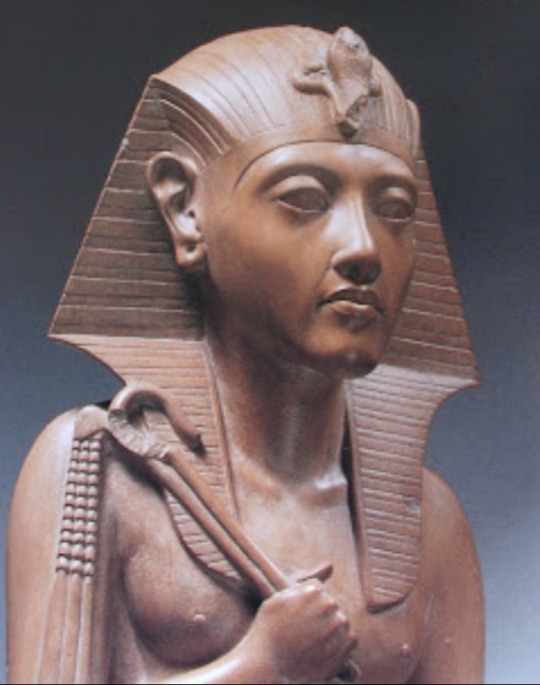
Hatshepsut
The fifth pharaoh of the Eighteenth Dynasty of Egypt, Hatshepsut reigned longer than any other woman of an indigenous Egyptian dynasty.
She was one of the most prolific builders in Ancient Egypt.
To legitimize her reign, Hatshepsut claimed she was divinely conceived by the god Amun, who appeared to her mother in the guise of the pharaoh Thutmose I, her father.
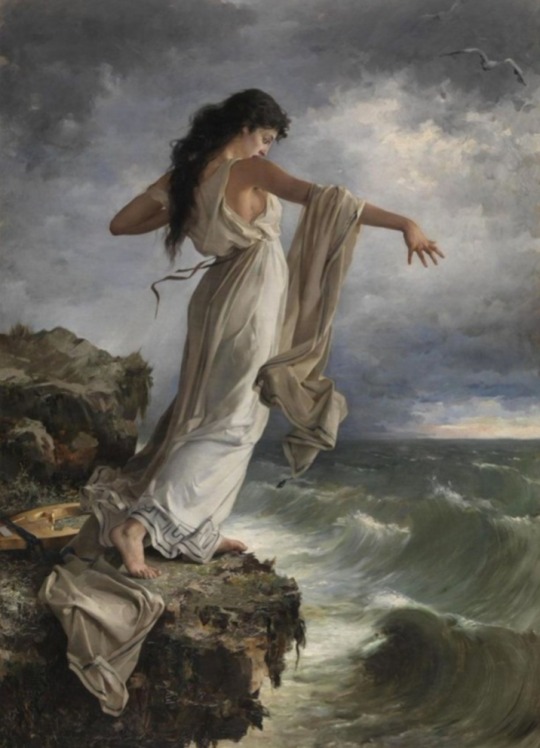
Sappho
An ancient Greek poet from the island of Lesbos, Sappho is celebrated for her lyric poetry, which explores love and passion.
Legend says that Sappho leaped from the Leucadian cliffs due to her unrequited love for Phaon, a ferryman, demonstrating the depth of her emotional expressions that permeated her work.

Artemisia I of Caria
A queen of the ancient Greek city-state of Caria and an ally of Xerxes I during the Second Persian invasion of Greece.
In the Battle of Salamis, Artemisia was so cunning in combat that she intentionally rammed her ally's ship to escape the Greeks, convincing them she was an ally and thus avoiding capture.

Hypatia
A mathematician, astronomer and philosopher in Alexandria, Egypt, Hypatia was a renowned teacher and thinker.
Hypatia was known to drive through Alexandria in her chariot to deliver public lectures on philosophy, defying the gender expectations of her time.
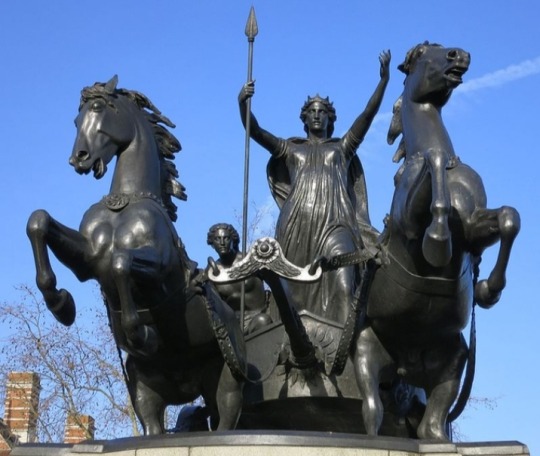
Boudicca
The warrior queen of the Iceni tribe who led a major uprising against the occupying forces of the Roman Empire in Britain.
After the Romans flogged Boudicca and raped her daughters, she rallied her tribe and neighboring tribes for revenge, resulting in the destruction of Roman settlements and the decimation of the Roman Ninth Legion.
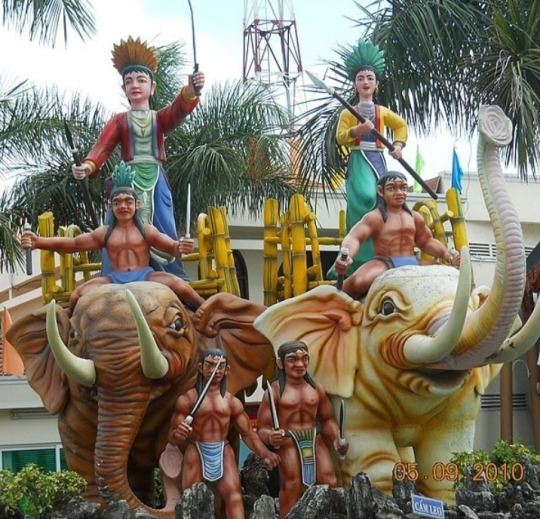
The Trung Sisters: Trung Trac and Trung Nhi
Vietnamese military leaders who rebelled against Chinese Han dynasty rule, becoming enduring symbols of resistance.
The sisters, after witnessing the suffering of their people under Chinese rule, famously declared their independence by proclaiming:
"All the male heroes bowed their heads in submission; only the two sisters proudly stood up to avenge the country."

Khawlah bint al-Azwar
A legendary female Muslim warrior, she fought alongside the early Muslims in the battles against the Byzantine Empire.
Khawlah famously donned male warrior’s armor to rescue her brother from a Byzantine prison camp, charging into battle with such ferocity that opponents assumed she was a supernatural entity.

Joan of Arc
A French heroine and saint of the Catholic Church, Joan led French forces to victory over the English at Orléans.
Joan persuaded a skeptical Charles VII of France of her divine mission to save France by correctly predicting a military reversal at the Siege of Orleans, before any messenger could have reached them with the news.

Zenobia
The third-century queen of the Palmyrene Empire in Syria who challenged the authority of the Roman Empire.
Zenobia was so bold that she claimed descent from Cleopatra, positioning herself as the Egyptian queen's successor in defiance of Rome and marched her armies as far as Egypt and Anatolia.
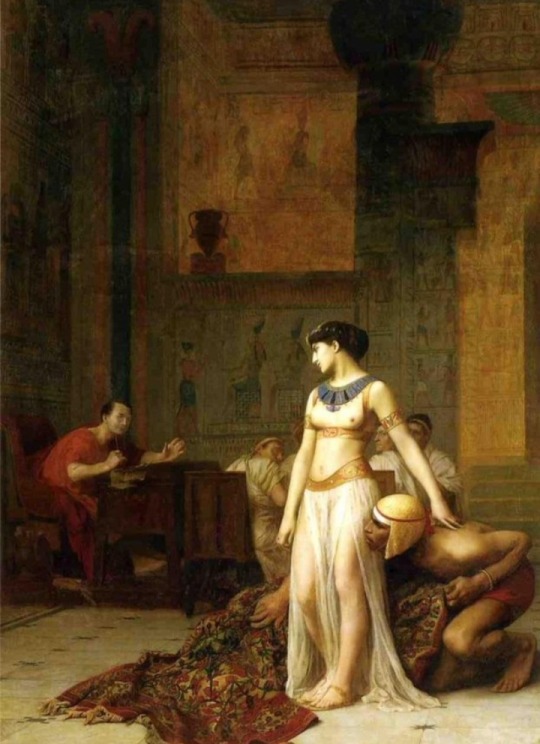
Cleopatra VII
The last active ruler of the Ptolemaic Kingdom of Egypt, Cleopatra is known for her intelligence, political acumen, and dramatic love affairs.
In a famous encounter to secure her alliance with Julius Caesar, Cleopatra had herself wrapped in a carpet (or linen sack, according to some accounts) and delivered to him, emerging to charm Caesar with her wit and beauty.
#female warriors#ancient civilizations#legendary warriors#Hatshepsut#Amun#Thutmose I#Sappho#Phaon#Artemisia I of Caria#Xerxes I#Hypatia#Boudicca#The Trung Sisters: Trung Trac and Trung Nhi#Khawlah bint al-Azwar#Joan of Arc#Charles VII of France#Zenobia#Cleopatra VII#Julius Caesar#ancient empires#ancient world#legends
5 notes
·
View notes
Text
Every book I read in 2023!
Key:
🖖 = science fiction
💀 = horror
🏰 = historical element
🚀 = space non-fiction
✨ = favorite fiction
🧠 = favorite non-fiction
A Mathematician's Lament by Paul Lockhart (🧠)
Doomsday Book by Connie Willis (🖖,✨,🏰)
Free Time by Jenny Blake (🧠)
No More Police: A Case for Abolition by Mariame Kaba and Andrea J. Ritchie (🧠)
The Spare Man by Mary Robinette Kowal (🖖)
Profit First by Mike Michalowicz
Savage Appetites: True Stories of Women, Crime, and Obsession
The Missing Cryptoqueen by Jamie Bartlett
Second Contact by Mike Resnik (🖖)
Hype: How Scammers, Grifters, and Con Artists Are Taking Over the Internet - and Why We're Following by Gabrielle Bluestone
Astrotopia: The Dangerous Religion of the Corporate Space Race by Mary-Jane Rubenstein (🚀)
Black Hole Survival Guide by Jana Levin (🚀,🧠)
To Say Nothing of the Dog by Connie Willis (🏰,✨)
One Giant Leap by Charles Fishman (🚀,🧠)
The New Guys by Meredith Bagby (🚀,🧠)
The Mission: A True Story by David W. Brown (🚀,🧠)
Intuitive Eating by Elyse Resch and Evelyn Tribole (🧠)
Up To Speed: The Groundbreaking Science of Women Athletes by Christine Yu (🧠)
Rise of the Rocket Girls by Nathalia Holt (🚀)
The Strange by Nathan Ballingrud (🖖,💀)
The Scourge Between Stars by Ness Brown (🖖,💀)
How I Killed Pluto and Why It Had It Coming by Michael Brown (🚀)
Dead Silence by S.A. Barnes (🖖,💀)
Off-Earth: Ethical Questions and Quandaries for Living in Outer Space by Erika Nesvold (🚀,🧠)
The Last Action Heroes: The Triumphs, Flops, and Feuds of Hollywood's Kings of Carnage by Nick De Semlyen (🧠)
If It Sounds Like a Quack...: A Journey to the Fringes of American Medicine by Matthew Hongoltz-Hetling
The Possibility of Life by Jamie Green (🚀,🧠)
It Rides A Pale Horse by Andy Marino (💀)
Camp Damascus by Chuck Tingle (💀)
Misquoting Jesus: The Story Behind Who Changed the Bible and Why is a book by Bart D. Ehrman (🧠)
The Dark Between The Trees by Fiona Barnett (🏰,💀)
Ararat by Christopher Golden (💀)
The Best American Science and Nature Writing 2023, edited by Anya Elizabeth Johnson
Utopia for Realists: The Case for a Universal Basic Income, Open Borders, and a 15-hour Workweek by Rutger Bregman (🧠)
System Collapse by Martha Wells (🖖,✨)
Paladin's Faith: Saint of Steel #4 by T. Kingfisher (✨)
Far and away Doomsday Book was the favorite work of fiction I read in 2023. I had a better year of in 2023 than 2022 - I didn't like the majority of the fiction I read in 2022.
Most of the space non-fiction books I read were bangers. Honestly, most of the non-fiction I read this year, I also enjoyed. The Last Action Heroes stood out to me as being a light, fun book that was both a new release and out of my regular wheelhouse.
Astrotopia was my least-favorite non-fiction, Arrarat was my least-favorite fiction. (Neither of these are saying that much, since I DNF most books I really dislike.
3 notes
·
View notes